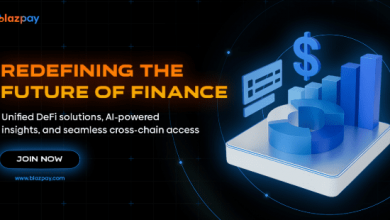Why Practical Applications Are Gaining Investor Confidence

The cryptocurrency market’s grown up. Where speculative fever once ruled, we’re now watching something more mature unfold. 84% of institutional investors are either already using or expressing serious interest in utility tokens and stablecoins, according to EY’s 2025 Institutional Investor Digital Assets Survey.
This isn’t the same crowd that once dismissed crypto entirely. These are the institutions that traditionally moved cautiously, demanded measurable returns, and avoided anything resembling a casino. Yet here they are, allocating real money to digital assets with practical applications. Even platforms like crypto listing site coinmooner have shifted focus toward projects demonstrating genuine utility rather than speculative potential.
We’re witnessing three fundamental changes driving this confidence. First, institutional money is flowing toward applications that solve actual problems. Second, entire industries are integrating blockchain technology into their core operations. Third, enterprise adoption is validating what many suspected—utility tokens aren’t just investment vehicles, they’re becoming essential infrastructure.
The question isn’t whether this trend will continue. It’s which applications will prove most valuable as our financial systems evolve.
Money Talks, Speculation Walks
The numbers tell a story that’s hard to ignore. Three-quarters of institutional investors expect to increase their digital asset allocations in 2025. More telling? 59% are planning to allocate over 5% of their assets under management to digital assets or related products.
This represents a fundamental shift in institutional thinking.
As industry expert Mihir observed, “the cryptocurrency market in 2025 is expected to shift focus towards coins with real-world utility, as tokens lacking active usage or practical application will likely be sold off by investors.” We’re seeing this play out in real-time. July 2025 marked a turning point where utility tokens began leading crypto market movements, with developers, creators, and institutional backers favoring assets backed by real infrastructure and usage.
The regulatory landscape is also clearing. Nearly half of surveyed institutional investors expressed interest in using stablecoins specifically for yield generation, presale, transaction convenience, and foreign exchange operations. They’re not buying these for price appreciation—they’re using them as tools.
Consider this: 76% of firms intend to invest in tokenized assets by 2026, driven primarily by portfolio diversification goals. They’re seeking access to alternative investments like private equity, private credit, and real estate with lower minimum capital commitments than traditional structures allow.
This isn’t speculation disguised as sophistication. It’s institutions recognizing that tokenization provides genuine access to previously illiquid markets.
From Telecom Bills to Real Estate Transactions
Telecommunications provides one of the most prevalent cases of utility tokenization. RZTO is the utility token that runs Rizz Wireless, an FCC licensed mobile virtual network operator that allows users to earn tokens as a reward for daily mobile activities (renewing mobile plans, using talk time, data savings, etc.).
These tokens are not “NFTs” or collectable digital art. They are functional currency for hotel and flight bookings, data top-ups, travel-related overseas-roaming services, and in-store purchases. RZTO will run on the Solana blockchain to facilitate rapidly scalable, cost-effective transactions on a global basis.
Financial infrastructure has even more diversified uses. Newly launched tokens in the real estate tokenization space are particularly exciting, with industry forecast suggesting that tokenized real estate assets will reach $1.4 trillion valuation by 2025. Security tokens that represent real-world assets are providing liquidity to otherwise illiquid markets by permitting investment purchase fractions for property in a manner that is just as easy as trading stocks.
Stablecoins have emerged as the utility token success story. Institutions aren’t holding them for appreciation—they’re using them for practical financial operations. The efficiency gains in cross-border payments, the yield opportunities in DeFi protocols, and the settlement convenience in international transactions create measurable value.
Platform access represents another significant utility category:
- Ethereum’s ETH remains essential for smart contracts and gas fees across thousands of projects
- Filecoin’s FIL enables decentralized file storage payments
- Golem’s GLM grants access to distributed computing power
- Brave Browser’s BAT compensates users for viewing advertisements
These tokens function as digital membership passes, streamlining user interactions with blockchain services. Ethereum’s March 2025 Pectra update simplified smart contract transactions and allowed non-ETH token payments, enhancing practical utility even further.
Enterprise Adoption Writes the Checks
Commercial viability ultimately determines which tokens survive. Hedera’s hashgraph consensus mechanism provides the lightning-fast, low-cost transactions that high-throughput business applications require. This isn’t theoretical—companies like Avery Dennison and DBS Bank are building on the network, making HBAR one of the most commercially viable Layer-1 solutions available.
The sustained trading volumes support this enterprise focus. Projects with strong utility like Polygon maintain substantial activity—$400 million in 24-hour volume measurements indicate genuine market demand rather than speculative trading.
Enterprise adoption creates a different kind of confidence than retail speculation ever could.
Unlike speculative assets, utility tokens create quantifiable value through usage. Platforms offering utility tokens often incentivize participation through staking rewards, liquidity provision, or application engagement. This creates sustainable demand that doesn’t depend on market sentiment alone.
The regulatory clarity that institutions identify as both their biggest risk and opportunity in 2025 should encourage new market participants and increase activity. Expected guidance around custody, tax treatment, stablecoin usage, and permissible activities provides the foundation institutions need for larger allocations.
More importantly, these developments indicate that utility tokens are transitioning from investment vehicles to operational infrastructure.
Building Tomorrow’s Financial Plumbing
The evidence points toward structural rather than cyclical change. We’re watching crypto mature from speculation-driven markets to application-driven infrastructure. The institutional data, practical applications, and enterprise validation create a compelling case that utility tokens are becoming the financial plumbing of the digital economy.
This evolution changes the fundamental question for investors. Instead of asking “which tokens will appreciate?” the focus shifts to “which applications create lasting value?” That’s a much more mature conversation.
The cryptocurrency market’s transformation reflects broader economic digitization. As traditional financial processes move on-chain, utility tokens provide the access, governance, and operational capabilities these systems require.
We’re not witnessing the end of speculation in crypto markets. But we are seeing the emergence of a parallel economy built on practical applications, measurable value creation, and institutional confidence. That’s probably the most significant development in cryptocurrency’s brief history.





